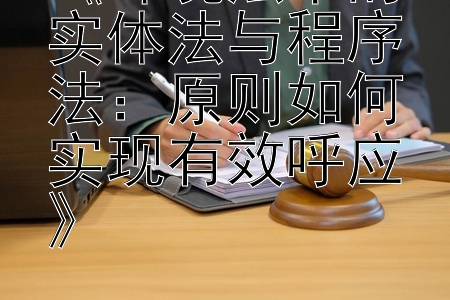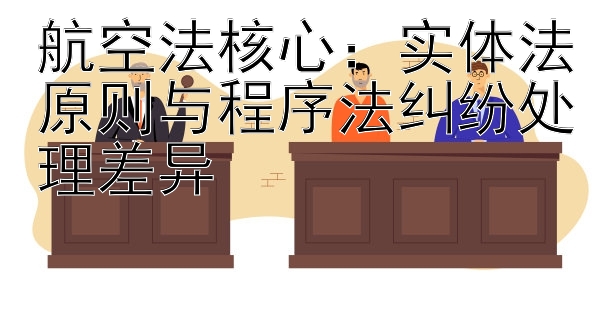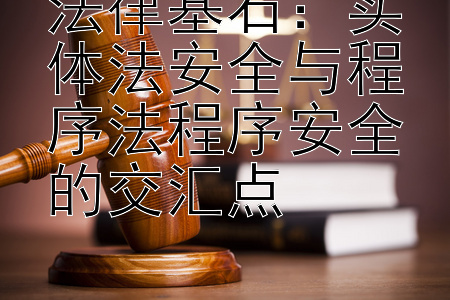《环境法中的实体法与程序法:原则如何实现有效呼应》
在现代社会中,环境保护已经成为全球关注的重要议题之一。为了确保环境的可持续发展,各国纷纷制定了相应的法律法规,其中就包括了环境法这一重要领域。环境法的目的在于通过立法手段保护自然环境和生态系统免受人类活动的负面影响,并促进人与自然的和谐共生。在这个过程中,实体法和程序法的有效衔接至关重要,它们共同构成了环境法治的核心内容。
一、实体法与程序法的基本概念
实体法是指规定具体权利义务或者法律关系的内容的法律,它直接规范人们的行为和相互之间的权责关系。例如,我国的《中华人民共和国环境保护法》就是典型的实体法,它明确规定了公民、企业和政府在环境保护方面的责任和义务。而程序法则是指为确保实体法的正确适用所规定的诉讼手续、审判过程以及执行等步骤的法律。程序法的主要作用是保证司法公正和效率,确保当事人的合法权益得到平等的保护。
二、实体法与程序法在环境法中的体现
在环境法中,实体法主要包括污染防治法(如水污染防治法、大气污染防治法)、资源保护法(如森林法、草原法)、生态保护法(如野生动物保护法、自然保护区条例)以及核安全法等。这些法律规定了各类主体在环境保护中的行为边界和法律责任,为维护生态环境提供了坚实的法律依据。而程序法则体现在环境执法、环境纠纷解决等方面,例如环评审批程序、环保
as
In modern society, environmental protection has become a global concern. To ensure the sustainable development of the environment, countries have formulated corresponding laws and regulations, including the important field of environmental law. The purpose of environmental law is to protect natural environments and ecosystems from human activities through legislative means, and promote harmony between man and nature. In this process, the effective connection between substantive law and procedural law is crucial, as they together constitute the core content of environmental rule of law.
I. Basic Concepts of Substantive Law and Procedural Law
Substantive law refers to laws that specify rights and obligations or the contents of legal relationships, directly regulating people's behavior and mutual rights and responsibilities. For example, China's "Environmental Protection Law of the People's Republic of China" is a typical substantive law that clearly stipulates the responsibilities and obligations of citizens, enterprises, and governments in environmental protection. Procedural law, on the other hand, includes litigation procedures, trial processes, and enforcement steps required for the correct application of substantive law. Its main function is to guarantee judicial fairness and efficiency, ensuring equal protection of parties' legitimate interests.
II. Substantive Law and Procedural Law in Environmental Law
In environmental law, substantive law mainly includes pollution prevention laws (such as water pollution prevention law, air pollution prevention law), resource conservation laws (such as forestry law, grassland law), ecological protection laws (such as wildlife protection law, regulations on nature reserves), nuclear safety laws, etc. These laws define the scope of action and liabilities of various subjects in environmental protection, providing strong legal basis for maintaining the ecological environment. Procedural law is reflected in environmental law enforcement and dispute resolution, such as environmental impact assessment approval procedures, public participation mechanisms, administrative review and administrative lawsuits, and criminal investigation and prosecution procedures related to environmental crimes.
III. Principles of Effective Interaction Between Substantive and Procedural Laws in Environmental Law
- Complementarity Principle: Substantive law provides the norms and goals for environmental governance, while procedural law ensures their implementation. Both are indispensable parts of environmental justice.
- Balance Principle: There should be a balance between the strictness of substantive standards and the flexibility of procedural rules. Too rigid procedural requirements may hinder timely responses to environmental emergencies; too loose procedural provisions may lead to abuse of power by administrative agencies.
- Public Participation Principle: Public participation is an essential part of environmental governance. Procedural law should provide convenient channels for the public to participate in decision-making, supervision, and litigation regarding environmental issues.
- Transparency Principle: Information disclosure is key to ensuring transparency. Administrative agencies must disclose information about environmental policies, decisions, and cases in accordance with the law, allowing stakeholders to understand the regulatory situation and effectively exercise their rights.
- Non-Waiver Principle: Procedural rights cannot be waived without just cause. Even if both parties agree to bypass certain procedural requirements, the judiciary must strictly enforce them to prevent violations of due process.
- Enforcement Effectiveness Principle: Efficient enforcement requires coordination among different levels of government departments and courts. It also involves cooperation between domestic and international organizations to jointly address cross-border environmental problems.
IV. Case Analysis: The Yangtze River Protection Act and its Implementation Mechanism
The Yangtze River Protection Act is a landmark legislation aimed at protecting one of China's most important rivers. It exemplifies how substantive and procedural laws work together to achieve environmental objectives. The act sets forth comprehensive measures for river basin management, pollution control, biodiversity preservation, and ecosystem restoration. At the same time, it establishes a multi-level regulatory system involving environmental impact assessments, pollution discharge permits, monitoring networks, and emergency response plans. Moreover, the act emphasizes public participation by requiring authorities to solicit opinions from relevant sectors before making major policy changes affecting the Yangtze River Basin. Through these efforts, the Yangtze River Protection Act demonstrates the importance of integrating substantive and procedural elements into environmental regulation.








